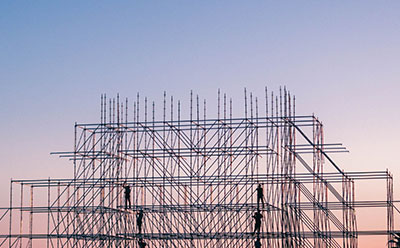Test for TMT Reinforcement Bars
Thermo Mechanically Treated (TMT) process has been developed for providing quality reinforcement to structures. The TMT process is a revolutionary process as it provides the steel bars high tensile strength as well as ductility. There are different grades for TMT reinforced steels namely Fe 415, Fe 500, Fe 550, Fe 600, where the numbers denote the minimum yield strength.
Is the strength real?
Even Though TMT reinforced bars are highly marketed by almost every steel reinforcement processing company, the TMT bars cannot be tested by common means of touch, feel or by sight. The standardisation process is currently the only means for the common man when choosing the reinforcement bars. He is troubled as he is not sure whether the reinforced bar he bought has the qualities and properties the advertisements boast.
The Test
The good news is that there are tests which are performed to identify the proposed strength of the reinforced bar. These tests are:
- Tensile Test
- Yield Stress Test
- Percentage Elongation Test
- Bend & Rebend Test
- Chemical Analysis Test
Tensile Test is the most common test performed on a reinforced steel bar. The TMT rebar is strained by the tensile force an elongated, generally to the point of failure, for the purpose of determining tensile strength.
Yield Stress is defined as the stress at which the TMT rebar will deform plastically i.e cannot be reshaped to the original.
Percentage elongation is the measure of reinforced bar’s ability to deform prior to breaking. Elongation is an important factor similar to yield strength in choosing the grade of TMT bars. Fe 415 has a minimum elongation of 14.5% whereas Fe 500 has a minimum elongation of 12%.Each grade TMT has its own purpose and is specifically designed for that purpose.
Bend & Rebend tests are mainly done to evaluate the ductility of the reinforced bar. The bend is performed by bending the steel bar at the midpoint resulting in bending without fracture. The Rebend test is performed to measure the effect of strain ageing on steel.


